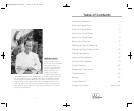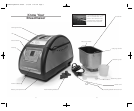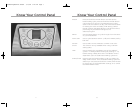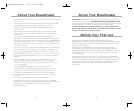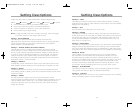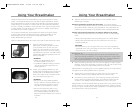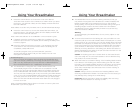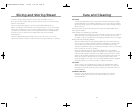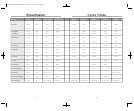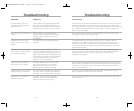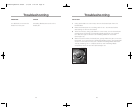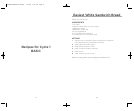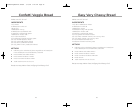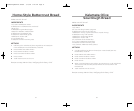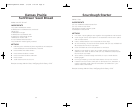
20
Care and Cleaning
CAUTION:
To prevent electrical shock, unplug the unit before cleaning. Allow
the Breadmaker to cool before cleaning. Do not immerse or splash
either the body or lid in any liquid as this may cause damage and/or
electric shock.
For best performance and maintenance, clean the Breadmaker after
each use as follows:
Outer Body, Lid, and Baking Chamber
Wipe the lid and outer body of the unit with a damp cloth or slightly
damp sponge. Use a damp sponge or cloth to wipe out any flour,
crumbs, or other materials from the baking chamber. Dry thoroughly.
Baking Pan and Kneading Blades
Both the baking pan and kneading blades have nonstick surfaces.
Do not use any harsh cleansers, abrasive materials, or utensils that
may scratch the surfaces. Over time, the nonstick surface may
change in appearance due to moisture and steam. This is normal and
has no effect on its use or quality.
Remove the baking pan and kneading blades from the baking
chamber before cleaning. Wipe the outside of the baking pan with
a damp cloth. Wash the inside of the baking pan with warm, soapy
water. If the kneading blades get stuck, fill the baking pan with hot
water and soak for 30 minutes or until they loosen and can be
removed easily. If the hole in the kneading blades become clogged,
carefully clean it out with a wooden or plastic toothpick.
CAUTION
Never use any of the following to clean your Breadmaker: Paint
Thinner, Benzine, Steel Wool Pads, Polishing Powder or Chemical
Dustcloths. DO NOT place any part or parts of the bread maker in
the dishwasher.
STORING THE UNIT
Be sure to dry all parts before storing including the viewing
window. Close the lid, and do not store anything on top of
the Breadmaker.
19
Slicing and Storing Bread
For best results, place bread on a wire rack and allow to cool
15 to 30 minutes before slicing. Use an electric knife or serrated bread
knife for even slices.
Store unused bread tightly covered (reclosable plastic bags or
plastic containers work well) at room temperature for up to three days.
For longer storage (up to one month), place bread in a tightly covered
container in the freezer. Since homemade bread has no preservatives,
it tends to dry out and become stale faster than commercially-
made bread.
Leftover slightly hardened bread may be cut into 1/2–inch or 1-inch
cubes and used in recipes to make croutons, bread pudding, or stuffing.
BreadmakingMachine manual 7/13/08 9:40 PM Page 19



